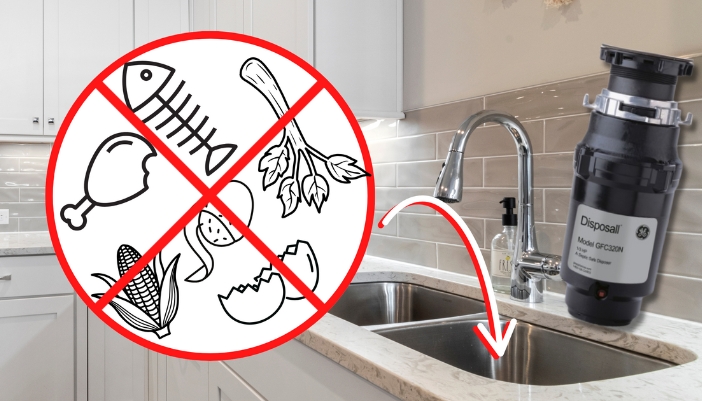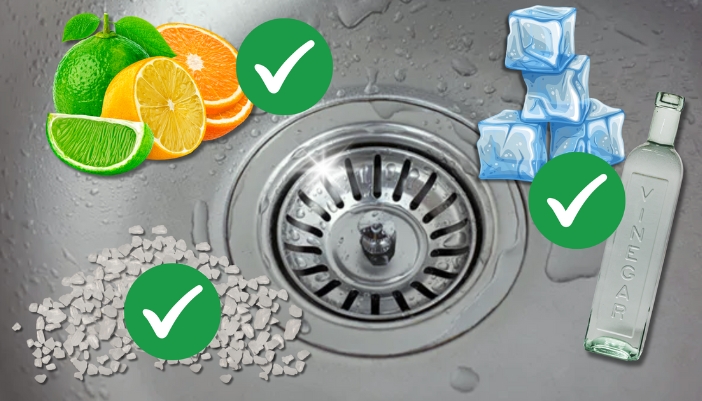Garbage disposals are one of the most useful kitchen tools, until something goes wrong. From strange noises to stubborn clogs, these issues can sneak up fast. The good news? Most of these problems are preventable with a little know-how and care.
Let’s break down the five most common garbage disposal issues: clogs, slow drainage, weird noises, foul odors, and fluid leakage. More importantly we’ll break down what you can do to avoid costly repairs down the line.

1. Clogs: A Recipe for Disaster
What Causes Clogs?
If your garbage disposal keeps clogging, it’s usually because of what’s going into it, or more importantly, what shouldn’t be. Items like bones, fibrous materials (think celery stalks, corn husks, and potato peels), and hard objects like avocado pits or fruit stones can jam the blades or even damage the motor.
Fats, oils, and grease are also major offenders. While they go down as liquids, they solidify in your pipes, leading to obstructions.
Another common culprit? Dumping too much food at once without enough water to flush it through. This can create a thick, pasty mass that sits in your sink, disposal, or pipes and starts to smell.
Pro Tip:
Always run the water generously when using the disposal to ensure proper breakdown and movement of food waste through the plumbing system.
What to Avoid
- Bones, eggshells, and fruit pits
- Coffee grounds and starchy foods (like pasta or rice)
- Fibrous scraps (corn husks, onion skins)
- Jewelry and utensils (yes, it happens!)
How to Clear a Jam Safely
First and foremost: Turn the power off at the breaker box. Never reach into a live disposal unit.
If needed, remove the sink strainer and, using gloves, reach in carefully to clear the blockage. If the unit still struggles or hums, it may be time to call in a pro.
2. Sluggish Drainage: When Water Just Sits There
The Cause
Slow drainage typically means ineffective comminution (that’s the fancy word for grinding) of food waste. When blades become dull or food isn’t broken down properly, particles can collect in the disposal chamber, drain trap, or pipes. Over time, this buildup slows water flow and can lead to standing water, or worse, backflow.
DIY Fixes
If the blockage is mild:
- Try flushing with hot water and dish soap.
- Use a plunger or baking soda and vinegar to clear minor clogs.
For persistent issues, the drain pipe may need professional snaking or cleaning.
Maintain Sharp Blades
Blunt blades = poor performance. Grinding fibrous waste or greasy food can dull blades over time. A great way to maintain edge sharpness is to run the disposal with ice cubes, rock salt, or an abrasive cleaner made for disposals.
3. Atypical Noises: “That Doesn’t Sound Right…”
Garbage disposals aren’t silent, but you know what sounds “normal.” A low grinding or whirring sound is fine. But if it starts making:
- Loud grinding or rattling: There could be debris, a broken blade, or a loose part.
- Humming with no movement: The blades may be jammed, or you could have an electrical issue.
Electrical Troubleshooting
No blockage, but it still hums? Check:
- The GFCI (Ground Fault Circuit Interrupter) outlet. It may need to be reset.
- Wiring connections. Loose wires can cut power to the motor.
- If the GFCI keeps tripping, that could signal a deeper electrical fault.
Sometimes, a failing motor will hum but can’t turn the blades. If you’ve ruled out debris and electrical issues, it’s time to bring in a technician.

4. Persistent Odors: When Funky Smells Won’t Quit
Why It Happens
Food particles often get trapped in the disposal or drain line, where they decompose and create nasty odors. Even if you don’t have a clog, the trapped waste will still smell if left too long.
Freshen Up With This DIY Method:
- Take a lemon or lime wedge and grind it into the disposal for approximately 30 seconds while running cold water.
- Follow with ½ cup baking soda and 1 cup vinegar.
- Let the fizzy mix sit for 5 –10 minutes, then flush with cold water.
⚠️ Avoid hot water during cleaning. Hot water can melt fats and cause them to cling to the blades.
If odors linger, that could signal grime buildup deeper inside. A thorough disassembly and cleaning by a pro may be needed.
5. Leaks: When Seals Start Failing
Where and Why It Leaks
Garbage disposals rely on tight seals to stay waterproof. If you see leaks around the top of the unit or under your sink, it’s likely due to:
- Deteriorated plumber’s putty between the sink and flange.
- Brittle or cracked O-rings.
- A loose or improperly installed flange.
- Worn-out rubber gaskets.
Leaks can lead to rust, water damage, and even mold… So it’s important to act fast!
What to Do
Minor seal failures can often be fixed DIY-style:
- Replace the O-ring or rubber gasket.
- Reapply plumber’s putty.
- Tighten or reinstall the flange.
If the unit is corroded or damaged, it might be time for a new garbage disposal altogether.
Final Word: Keep Your Disposal Happy
By staying on top of maintenance and being mindful of what goes down the drain, you can extend the life of your garbage disposal and avoid costly repairs.
If your unit is humming, clogging, leaking, or just plain stinking…don’t wait!

Carolyn Curry
Sales, Morrone Electric
carolyn@shoreappliancesct.com
170 Main St.
Westerly, RI 02891 | 401.596.2102